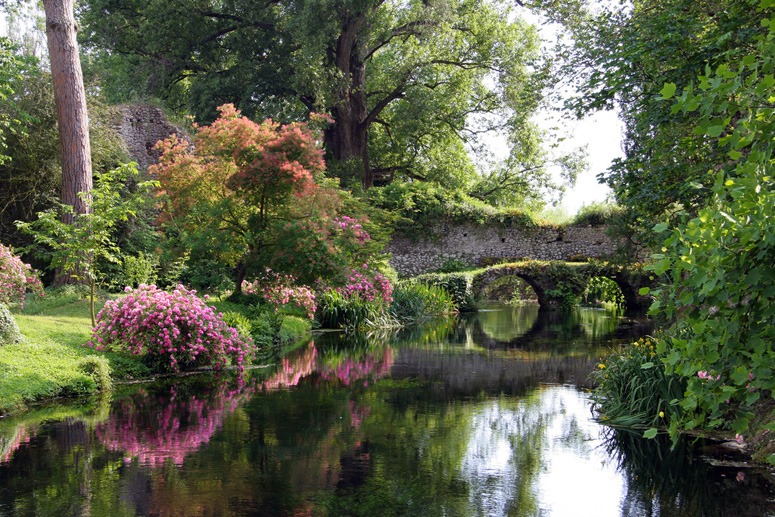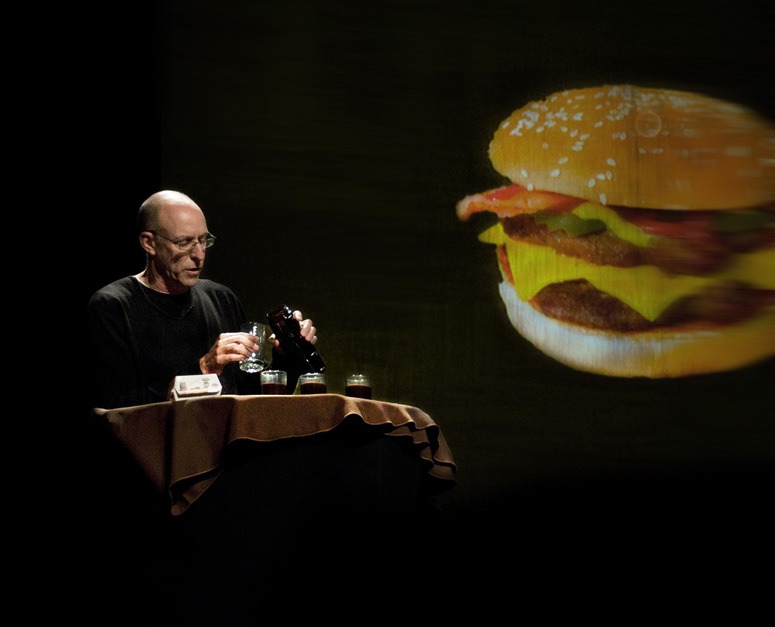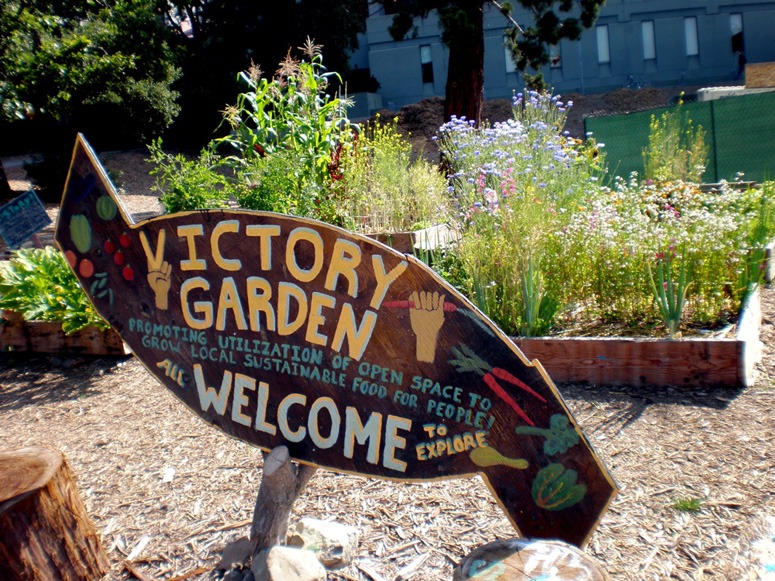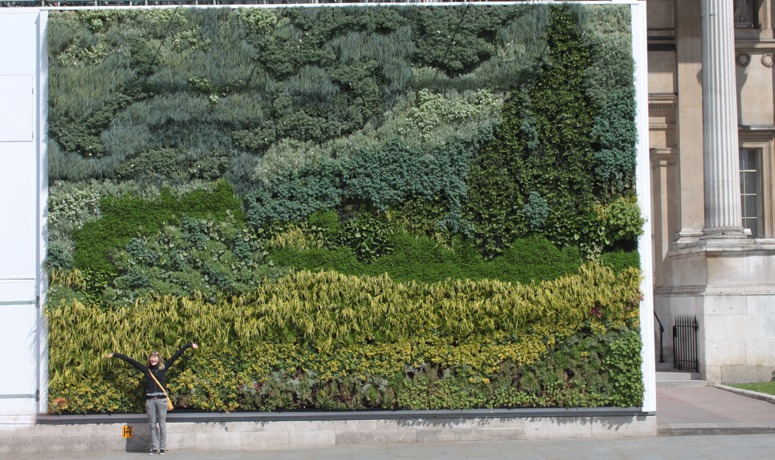 It is a pleasure to have a green wall in Trafalgar Square this summer, to cover some scaffolding. The green wall was sponsored by GE and the National Gallery, as part of its Carbon Plan. It was designed by landscape architect Shelley Mosco. It is based on Van Gogh’s Wheat Field with Cypresses (below left). Shelley’s planting design (below right) uses pointillist planting blocks for texture. The wall has 36 different species in 250x500mm modules, each containing 14 cells of 125x76mm). The living green wall is 4.8m x 7m and has over 8000 plants. Shelley is also interested in living green walls made with native plants,using a GIS system to guide plant selection for particular localities.
It is a pleasure to have a green wall in Trafalgar Square this summer, to cover some scaffolding. The green wall was sponsored by GE and the National Gallery, as part of its Carbon Plan. It was designed by landscape architect Shelley Mosco. It is based on Van Gogh’s Wheat Field with Cypresses (below left). Shelley’s planting design (below right) uses pointillist planting blocks for texture. The wall has 36 different species in 250x500mm modules, each containing 14 cells of 125x76mm). The living green wall is 4.8m x 7m and has over 8000 plants. Shelley is also interested in living green walls made with native plants,using a GIS system to guide plant selection for particular localities. 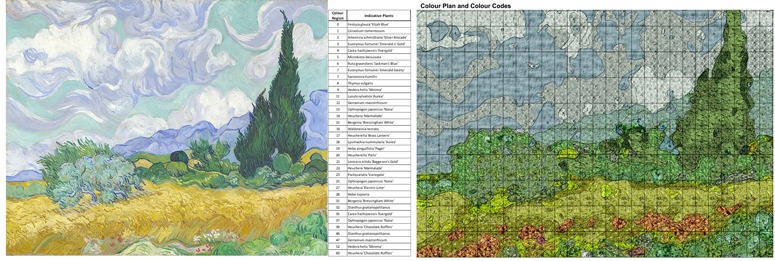
Author Archives: Tom Turner
Sir Geoffrey Jellicoe – a Blue Plaque for a landscape architecture but not for Susan
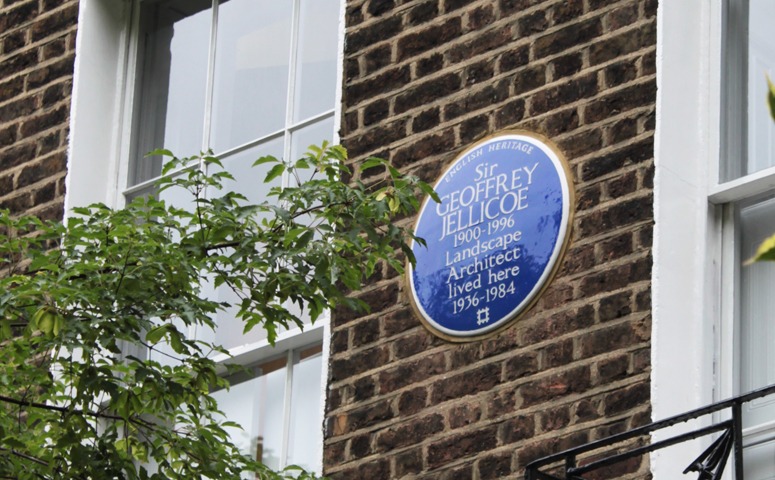 English Heritage Blue Plaque Scheme marks the dwellings of famous Londoners with Blue Plaques. Only one landscape architect has been honoured in this way. It is Sir Geoffrey Jellicoe. Famed for his design projects, his books and his role in founding the International Federation of Landscape Architects in 1948, the honour is well deserved. It is however regrettable that the family’s suggested inclusion of his wife’s name on the plaque was not acted upon. Married to each other and to landscape architecture, they were partners in every sense. Susan was an extremely capable woman who worked with Geoffrey on all his schemes. A friend told me that Geoffrey was vague about the difference between deciduous and coniferous plants. Susan did all his planting design and edited his books. Her contribution to the Landscape of man was even more significant: she took most of the photographs herself, did the picture research for the other photographs – and probably wrote the captions. We should also remember that the International Federation of Landscape Architects might not have been founded but for her linguistic skills. If English Heritage was not overtly sexist, it was less than generous in its decision to leave Susan’s name off the Blue Plaque. The Blue Plaque on 19 Grove Terrace, Dartmouth Park, NW5 IPH, reads: “Sir GEOFFREY JELLICOE 1900-1996 Landscape Architect lived here 1936-1984”
English Heritage Blue Plaque Scheme marks the dwellings of famous Londoners with Blue Plaques. Only one landscape architect has been honoured in this way. It is Sir Geoffrey Jellicoe. Famed for his design projects, his books and his role in founding the International Federation of Landscape Architects in 1948, the honour is well deserved. It is however regrettable that the family’s suggested inclusion of his wife’s name on the plaque was not acted upon. Married to each other and to landscape architecture, they were partners in every sense. Susan was an extremely capable woman who worked with Geoffrey on all his schemes. A friend told me that Geoffrey was vague about the difference between deciduous and coniferous plants. Susan did all his planting design and edited his books. Her contribution to the Landscape of man was even more significant: she took most of the photographs herself, did the picture research for the other photographs – and probably wrote the captions. We should also remember that the International Federation of Landscape Architects might not have been founded but for her linguistic skills. If English Heritage was not overtly sexist, it was less than generous in its decision to leave Susan’s name off the Blue Plaque. The Blue Plaque on 19 Grove Terrace, Dartmouth Park, NW5 IPH, reads: “Sir GEOFFREY JELLICOE 1900-1996 Landscape Architect lived here 1936-1984”
Chelsea Flower Show Trends 2011 – and the Chelsea Fringe Garden Show
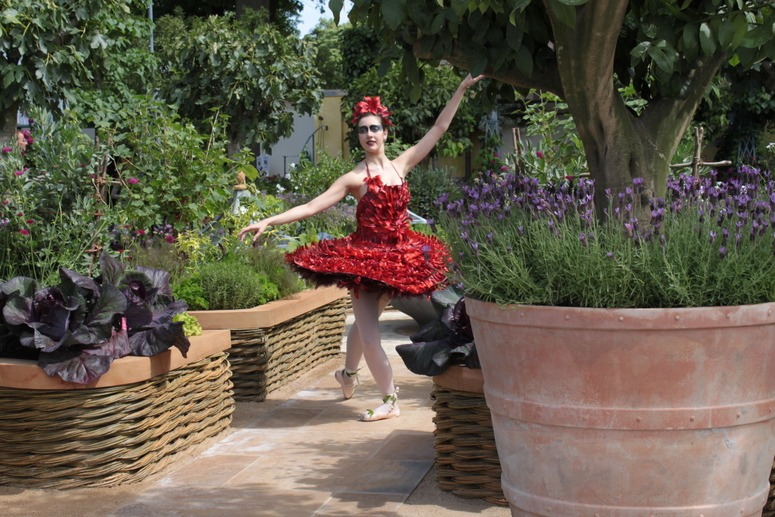
Sustainable and theatrical themes at Chelsea help argue the case for an Unofficial Chelsea Fringe Garden Festival
Amongst other things, garden design an arena for fashion. This tempts the critic to look for trends and what I noticed was more an extension of previous trends than anything completely new:
- the visual language of sustainability is becoming stronger, with green walls and green roofs tending towards the norm
- there is more use of food plants each year, as in the above photograph (of a design by Bunny Guiness)
- the interest in green roofs is trending towards high-rise gardens: Sarah Eberle designed an accessible roof garden; B&Q designed a multi-storey garden; Dairmud Gavin hung a garden from a crane [see 2011 Chelsea review]
- the financial trend is to more-and-more money being spent on the show gardens each year
The financial trend reminds me of a previous suggestion: the Official Chelsea Flower Show should be supplemented with an unofficial fringe event. We therefore renew the proposal, made in 2005, for a Chelsea Fringe Flower and Garden Show. The advantages of a Chelsea Fringe would include:
- there could be sustainably Permanent Show Gardens, as well as Temporary Show Gardens. People often remark on what a waste of money it is that Chelsea Show Gardens are only on view for a single week. The Chelsea Fringe would allow some of the show gardens to become permanent.
- many summer visitors to London, who cannot get tickets for the Official Chelsea Flower Show, would be able to see wonderful gardens. The gardens could be opened in sync with the official show and would then be at their best for the whole summer.
- the Chelsea Fringe would re-inforce London’s position as the World Capital of Gardening
- the Chelsea Fringe Show Gardens could be combined with theatrical and other events, as in the above photograph
- there could be Floating Chelsea Gardens on the Battersea Reach of the River Thames
Here are the 2007 proposals for the type of events which could be brought within the umberalla of a Chelsea Fringe Flower and Garden Show Events.
Waffle levee flood planning for the Mississippi
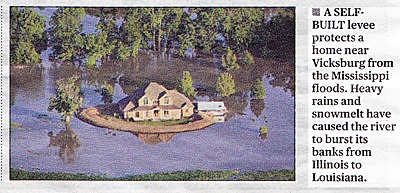 I was pleased to see that our post on Waffle cities: landscape planning, urban design and architecture for flood-prone regions and global warming has been verified as feasible. The snippet (courtesy of London Evening Standard 20.05.2011) shows that a homeowner in Vicksburg has made his home into the ‘cell of a waffle’ and that the self-build levee protected his home from the Mississippi floods of spring 2011. Congratulations!
I was pleased to see that our post on Waffle cities: landscape planning, urban design and architecture for flood-prone regions and global warming has been verified as feasible. The snippet (courtesy of London Evening Standard 20.05.2011) shows that a homeowner in Vicksburg has made his home into the ‘cell of a waffle’ and that the self-build levee protected his home from the Mississippi floods of spring 2011. Congratulations!
Monty Don on the best garden in the world: Ninfa?
Monty Don, in a recent TV series on the gardens of Italy, remarked that his friends know he has visited a lot of gardens and often ask him ‘What is the best garden in the world?’. So, while visiting Ninfa, he told us: ‘This is it’. I too have visited a lot of gardens and, though I could not name a ‘best garden’ have ventured a list of The World’s Top Ten Gardens. My list does not include Ninfa. Nor have I been there, but I would like Monty to be questioned or psychoanalysed to discover the reasons for his choice. My theory is that Monty Don is more interested in plants and planting than art and design. I like him as a presenter but despair of his garden history and regret his being such a gusher. Critics should be critical and, to be fair, he did visit Isola Bella to say ‘it’s kitch but I love it’.
Image courtesy sunshinecity
Grow your own food with sunlight – instead of eating oil
Most of the oil is used to produce the nitrogen used to grow the ingredients for the burger – according to Michael Pollan. The alternative is to eat locally grown food for which the energy comes from the sun – and from human labour. If there was to be a return to ‘sun-grown’, instead of ‘oil-grown’ food then agriculural employment would have to rise again after a long fall.
The other point about a burger-rich diet is that it is extremely bad for your health. The US healthcare crisis is said to be is a consequence of the US diet which is a consequence of the US pattern of agricultural subsidies. In Europe, the pattern is similar but not so severe.
Landscape architects and garden designers can do a little to ameliorate the problem: they can include food plants in their planting designs.
Above image courtesy Pete Foley. Below image, of a local garden in Berkeley, California, courtesy hfordsa

